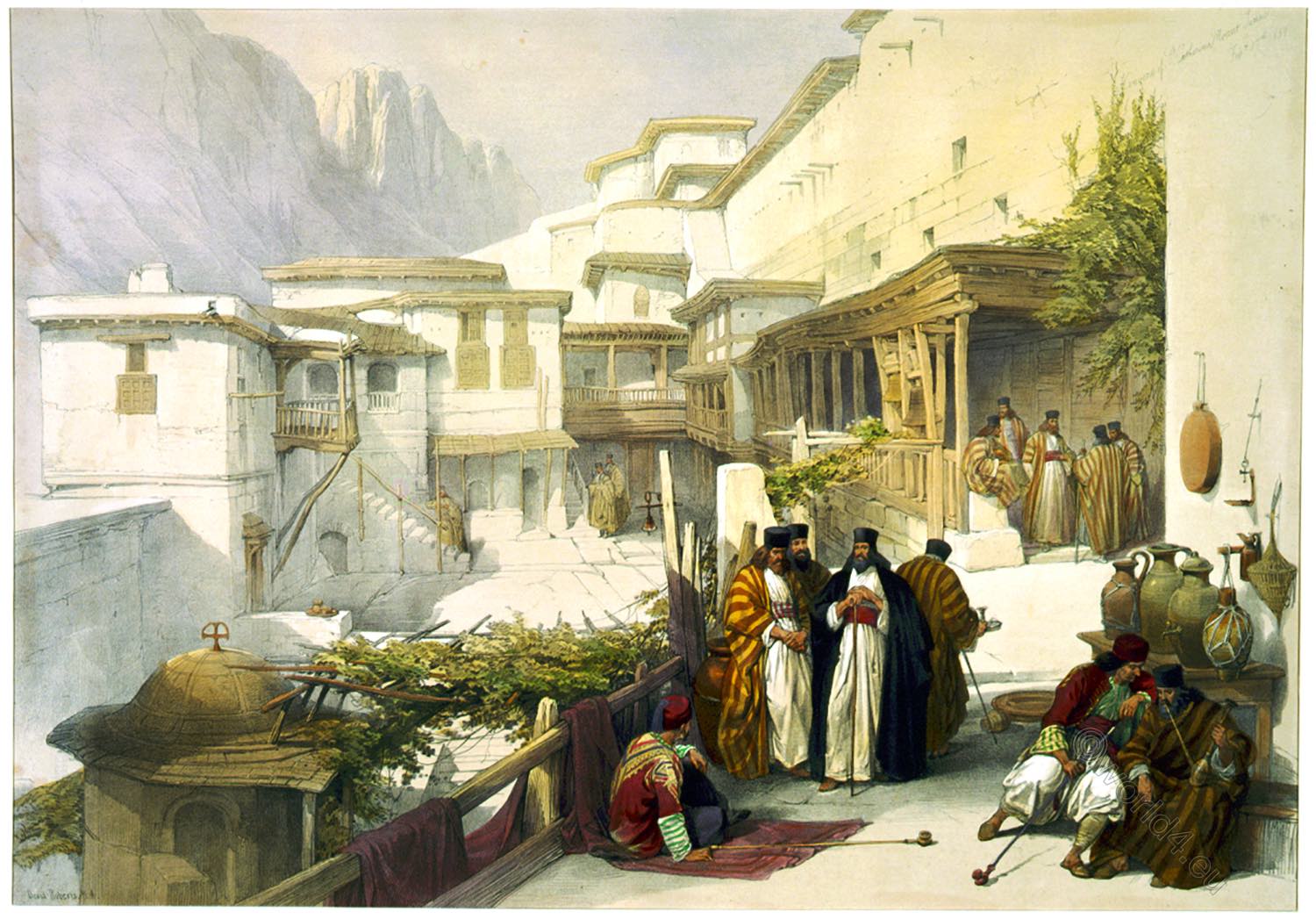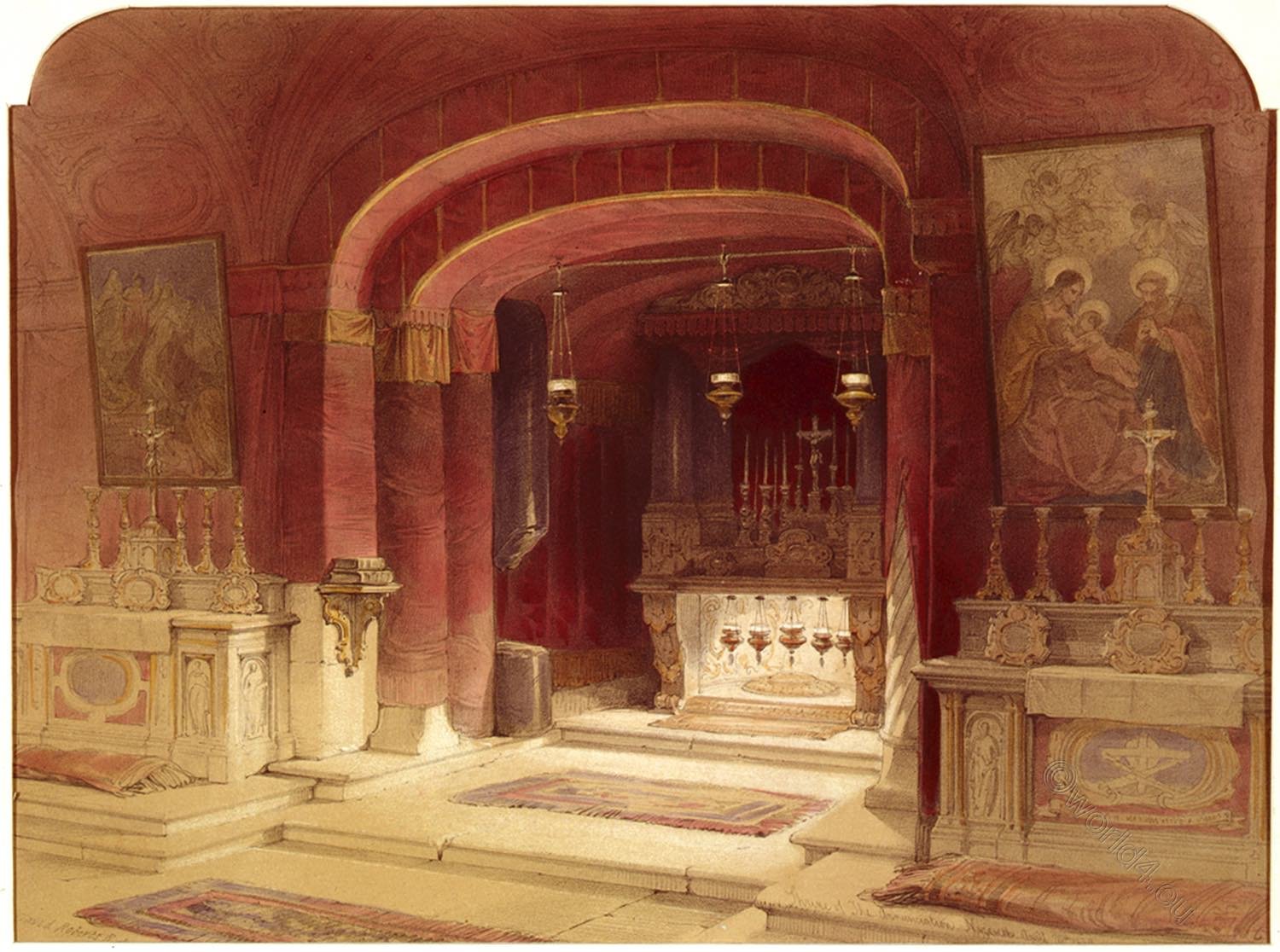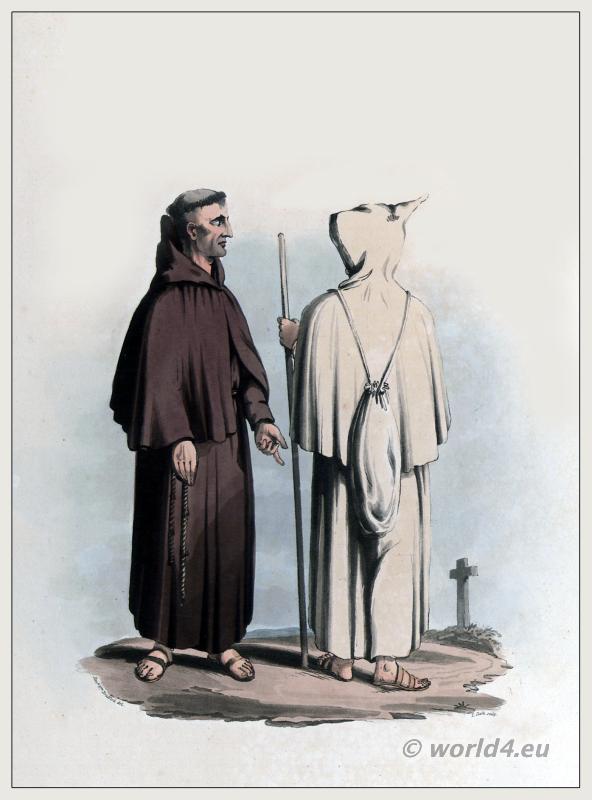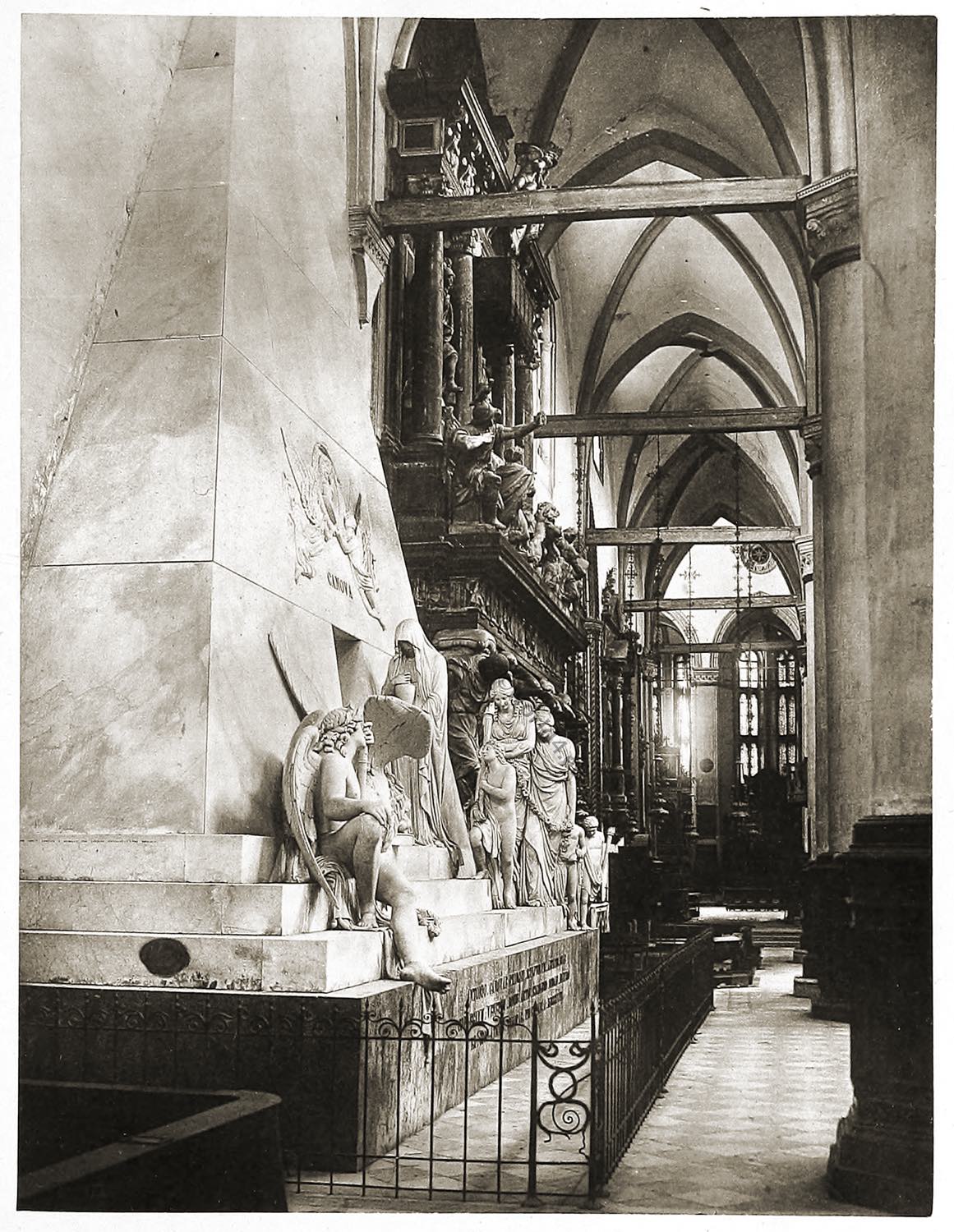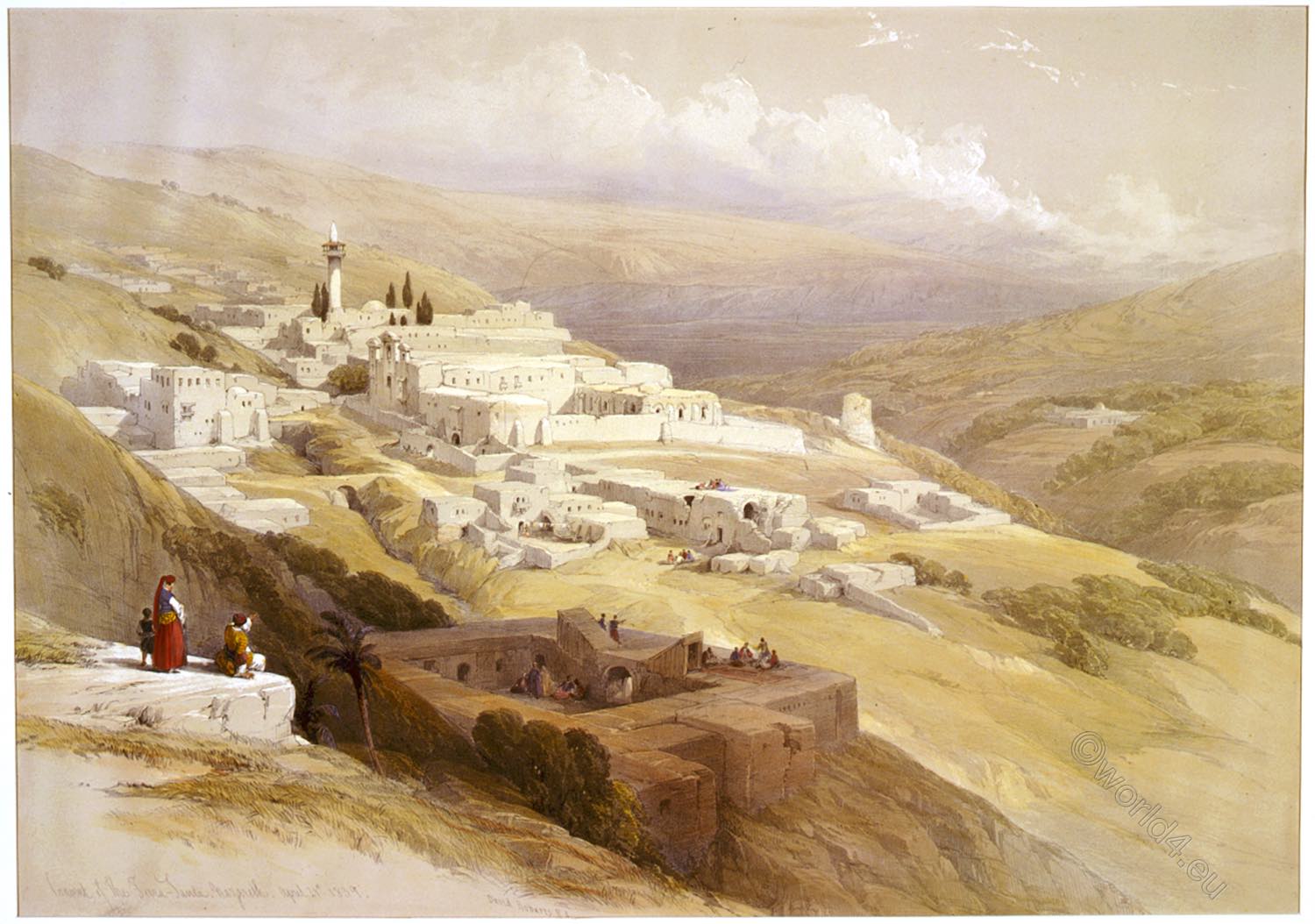
CONVENT OF THE TERRA SANTA, NAZARETH.
This Convent belongs to the Latin monks, and is a strong and spacious building, or rather collection of buildings, which, unlike the usual fate of the Convents in Palestine, has been repaired and restored within the last twelve years. The Convent had been originally built in 1620, on the site of a Church of remote antiquity. A century later, it had been, in some degree fortified, and by subsequent additions it now ranks as a respectable place of defense, at least against native assaults. 1)
M. Lamartine, who visited the Convent in 1832, gives its description most in detail.
He arrived at the “high, yellow walls” at evening. A broad iron gate admitted him and his attendants into an outer court. Some Neapolitan and Spanish monks, who were winnowing wheat for the Convent, conducted them into an immense corridor, into which the cells of the monks and the chambers for the reception of strangers opened.
In the morning they were shown the Church and the general buildings of the Convent. Fifteen or twenty Spanish monks resided in the Convent, occupied in attendance on its religious ceremonial, and in receiving strangers. One of the brotherhood, whom they name the Incumbent of Nazareth, is especially charged with the care of the Christian community in the town, amounting to about two thousand persons, who, as well as the monks, generally enjoy the full exercise of their religion. 2)
A little Maronite Church, on the S.W. extremity of Nazareth, has been regarded by recent travelers as marking the spot where the popular outrage was attempted against our Lord. It stands under a precipice, where the hill breaks off in a perpendicular wall of forty or fifty feet in height. The monks have been unsparing, and almost profane, in giving names to the various localities. A small Church to the N.W. of the Convent is asserted to be built where the “workshop of Joseph” stood. This was described by Maundrell and Pococke as in ruins, but was found by Dr. Clarke restored, and perfectly modern. To the west of this Church is a small arched building, which, we are told, “stands on the ground of the Synagogue,” if it is not “the Synagogue itself,” where our Lord applied the memorable prophecy of Isaiah to His own mighty mission.
“The Spirit of the Lord is upon me, because he hath anointed me to preach the Gospel to the poor; he hath sent me to heal the broken-hearted; to preach deliverance to the captives, and recovering of sight to the blind; to set at liberty them that are bruised; to preach the acceptable year of the Lord.” It has been conceived by some writers, that it was His adoption of the prophecy in His own character which exasperated the people; but this is an obvious error, for the adoption, “This day is this Scripture fulfilled in your ears,” was received with universal acknowledgment.
“And all bare him witness, and wondered at the gracious words which proceeded out of his mouth.” It was only when He predicted their rejection of Him, on the general ground of the jealousy and envy of human nature “No prophet is accepted in his own country”—that they instantly proceeded to give demonstration to the truth of His words by the attempt to destroy Him, “and rose up, and thrust him out of the city, and led him to the brow of the hill whereon their city was built, that they might cast him down headlong.” 3)
The site of Nazareth itself is admirable; and in the days when the land was fully peopled, when property was comparatively secure, as it was under the Roman authority, and when men dwelt “under their own vine and under their own fig-tree,” the valley of Nazareth may have been one of the loveliest spots in Palestine,— a scene, whose luxuriance and retirement, the expanse of the noble Lake of Tiberias, and the grandeur of the mountain landscape, rendered it not unsuited to the earthly dwelling of our Lord. It is a circular basin, encompassed by mountains. Richardson describes it, “as if fifteen mountains met to form an enclosure for this delightful spot; they rise round it, like the edge of a shell, to guard it from intrusion. It is a rich and beautiful field in the midst of barren hills; it abounds in fig-trees, small gardens, and hedges of the prickly pear; and the dense rich grass affords an abundant pasture.”
The village stands on the slope of the west side of the valley; the Convent at the east end, on high ground. In the village there is but one Mosque, which, however, forms a prominent feature in the View.
1) Roberts’s Journal. 2) Lamartine’s Travels. 3) Luke, iv. 18-29.
Source: The Holy Land, Syria, Idumea, Arabia, Egypt, & Nubia, by David Roberts, George Croly, William Brockedon. London: Lithographed, printed and published by Day & Son, lithographers to the Queen. Cate Street, Lincoln’s Inn Fields, 1855.
Continuing
Discover more from World4 Costume Culture History
Subscribe to get the latest posts sent to your email.


